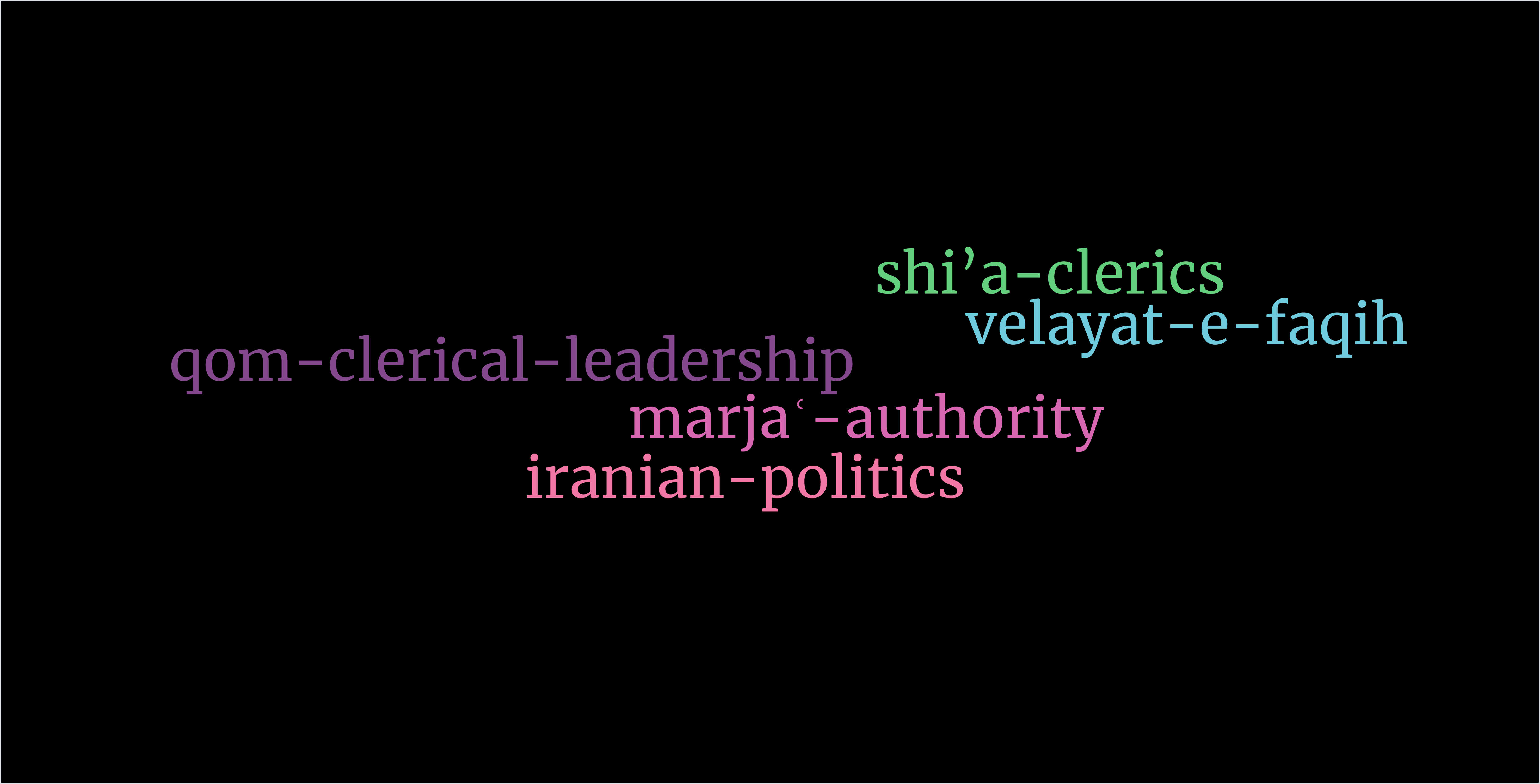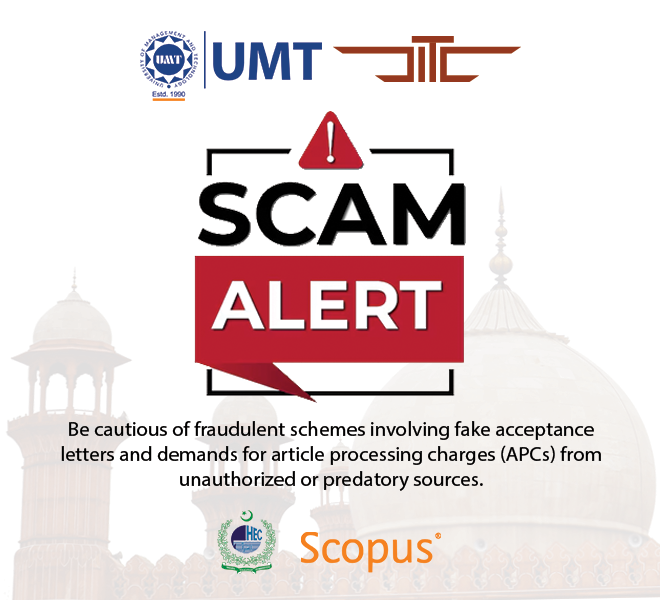Shiʿi Clerical Authority and Its Role in Iran's Political Landscape (1941–2024)
Abstract
 Abstract Views: 0
Abstract Views: 0
This study explores the transformation of Shi’a clerical authority in Iran, examining how clerics have evolved from religious leaders to prominent political figures with enduring influence. By tracing the historical development of clerical authority from the occultation of the last Imam to the present, the research highlights the financial mechanisms that sustain the marjaʿ (leading cleric) in contrast to state-backed Sunni religious structures. Through qualitative analysis, such as historical context and case studies like the 2009 Iranian election and the Green Movement, the study reveals how clerics navigate political pressures, sometimes in tension with the regime. The findings indicate that while the Islamic Republic officially endorses clerical authority, the clerical elite—particularly in Qom—operates with considerable independence, bolstered by financial autonomy and skilled political communication. This research contributes to understanding the nuance between the Republic of Islam and the clerical establishment, suggesting that the economic and strategic positioning of Shi’a clerics ensures their lasting influence in Iranian religious and political spheres.
Downloads
References
Calder, Norman. "Judicial Authority in Imami Shi’i Jurisprudence," British Journal of Middle Eastern Studies, 6.2 (1979), https://doi.org/10.1080/13530197908705268
Clarke, Lynda, ‘The Shi ‘i Construction of Taqlid,’ Journal of Islamic Studies, 12.1 (2001), https://doi.org/10.1093/jis/12.1.40
Cole, Juan R. "Imami Jurisprudence and the Role of the Ulama: Mortaza Ansari on Emulating the Supreme Exemplar." in Religion and Politics in Iran, edited by Nikki R. Keddie, 33-46, New Haven, 1983.
Eliash, Joseph. "The Ithnā’asharī-Shī’ī Juristic Theory of Political and Legal Authority." Studia Islamica 29, (1969): 17–30, https://doi.org/10.2307/1595085
Hazır, A. "Beyond Religion: Ulama and Politics in Pre-revolutionary Iran." İran Çalışmaları Dergisi, 1 (2), (2018): 39-57.
Ilmi, M. F. "Interpretation of Leadership After the Death of Prophet Muhammad (PBUH)." Doctoral Dissertation, Universitas Islam Negeri Sunan Kalijaga Yogyakarta, 2020.
Kadivar, Ali. "The Ayatollahs and the Republic: The Religious Establishment in Iran and Its Interaction with the Islamic Republic." New Analysis of Shia Politics, 6.28 (2017), https://doi.org/10.31235/osf.io/3d6jq
Kalantari, Mohammad R. "Mapping the Network of Shiʿi Clerical Relations in the Middle East: An Analytical Approach." Religion, State and Society, 52.1 (2024): 43–64, https://doi.org/10.1080/09637494.2023.2298605.
Kamrava, Mehran. "Leading the Faithful: Religious Authority in the Contemporary Middle East." Sociology of Islam, 6.2 (2018): 97–115, https://doi.org/10.1163/22131418-00602004.
Kazemeini, M. Teacher of Jurisprudence: The Life Story of the Precise Jurist Grand Ayatollah Hajj Sayyid Muhammad Muhaqiq Damad. Qum: Shi’a Bibliography Institute, 2019.
Kohlberg, Etan. "Imam and Community in the Pre-Ghayba Period." In In Praise of the Few. Studies in Shiʿi Thought and History, 187-212, Brill, 2020.
Lambton, Ann K. S., "A Reconsideration of the Position of the Marja’ Al-Taqlīd and the Religious Institution." Studia Islamica 20, (1964): 115–35, https://doi.org/10.2307/1595045.
Louër, Laurence. Transnational Shia Politics: Religious and Political Networks in the Gulf. Hurst, 2008.
Moussavi, Ahmad Kazemi. Religious Authority in Shi’ite Islam: From the Office of Mufti to the Institution of Marja’. International Institute of Islamic Thought and Civilization, 1996.
Pósfai, Márton., and Albert-László Barabási. Network Science. Cambridge University Press, 2016.
Al-Qazwini, Jawdat K. “The Religious Establishment in Ithna'ashari Shi'ism: A Study In Scholarly And Political Development.” PhD Dissertation, University of London, School of Oriental and African Studies (United Kingdom), 1997, https://eprints.soas.ac.uk/28898/1/10673072.pdf
Siavoshani, Zohreh Salehi. "The Role of the Clerics and the Religious Forces in the Iranian Movement of Nationalization of Oil Industry." Historia Actual Online 26, (2011): 7–19.
Tahiiev, Akif. "Female Leadership in Shia Islam: Women on the Way from Mujtahid to Marja’." Societies 14, no. 1 (2024): 2.
Tahmasebi-Birgani, Victoria. "Green Women of Iran: The Role of the Women's Movement During and After Iran's Presidential Election of 2009." Constellations: An International Journal of Critical & Democratic Theory 17, no. 1 (2010): 78-87.
Zaidi, Syed Zeeshan Haider. "Transformation in Political Thought of Ayatollah Montazeri." Technium Social Sciences, 29 (2022): 537–47.

Copyright (c) 2025 Kiki Mikail, Abdul Hadi, Munir, Jeniwaty Moh. Jody

This work is licensed under a Creative Commons Attribution 4.0 International License.

This work is licensed under a Creative Commons Attribution 4.0 International License. Authors retain copyright and grant the journal right of first publication with the work simultaneously licensed under a Creative Commons Attribution (CC-BY) 4.0 License that allows others to share the work with an acknowledgement of the work’s authorship and initial publication in this journal.







